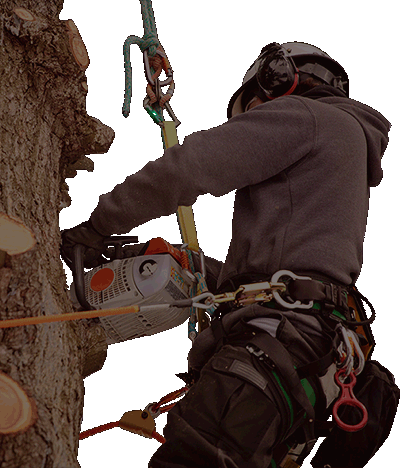
Trees can’t tell us when they’ve had too much to drink–or when they’re dying of thirst.
Instead, Spartanburg trees leave subtle clues that we need to decode. Look at your tree’s leaves, and let’s solve the mystery!
Is your Spartanburg tree getting too much, not enough or just the right amount of water?
The Difference between Overwatering and Underwatering Trees
Signs of Underwatering Trees
- Wilted or curling leaves that may turn brown at the tips or edge
- A sparse canopy of off-color and undersized leaves, leaf scorch or yellowing leaves
- Untimely fall color and early leaf drop
- “Even if you run a sprinkler in your yard, your Spartanburg trees likely need additional water,” said Rick Castro of Davey’s Northwest Seattle office. “The grass quickly slurps up the sprinkler’s water, leaving your Spartanburg tree thirsty. Plus, trees prefer to be watered deeply.”
Signs of Overwatering Trees
- The area around the Spartanburg tree is constantly wet
- New growth withers before it’s fully grown or becomes light green or yellow
- Leaves appear green but are fragile and break easily
Is your Spartanburg tree getting too much water or not enough?
In both cases, the Spartanburg trees can look eerily similar. Luckily, there are two ways you can determine once and for all if your Spartanburg tree needs more or less water.
- Quick and easy check: Stick a long screwdriver into the soil below your tree. If that’s hard to do, your Spartanburg tree needs more water.
- Precise-as-can-be check: Below your tree, dig 6-8 inches deep and grab a handful of soil. Your soil should be cool and moist. If it’s sopping wet, you’re overwatering. If your soil isn’t drenched or sandy, roll into a ball. If it crumbles, your Spartanburg tree needs more water. Poke the soil ball a few times. If it doesn’t budge, you probably have clay soil.
How to Fix or Save Overwatered Tree
If your Spartanburg tree has too much water, it’s struggling to breathe. That excess water commandeers spots air pockets previously held. So, your Spartanburg tree roots are getting too much water and not enough oxygen. That’s a double whammy that could lead to root rot, fungi or long-term Spartanburg tree stress.
Here’s how to fix an overwatered tree:
- Stop. Don’t water your Spartanburg tree for a week or two. Before watering again, do the screwdriver test mentioned above. Only water your Spartanburg tree when it needs it.
- Fix. If you have clay soil, mix in compost to help it drain better.
- Inspect. After it rains, see if there’s water pooling around your Spartanburg tree and find out where it’s coming from. Is water running downhill and landing at your tree’s base? Does your rain spout empty right near your tree? If you spot an environmental cause like this, it may be best to move the Spartanburg tree entirely.
Click here to learn exactly how much water your Spartanburg trees need each week.






